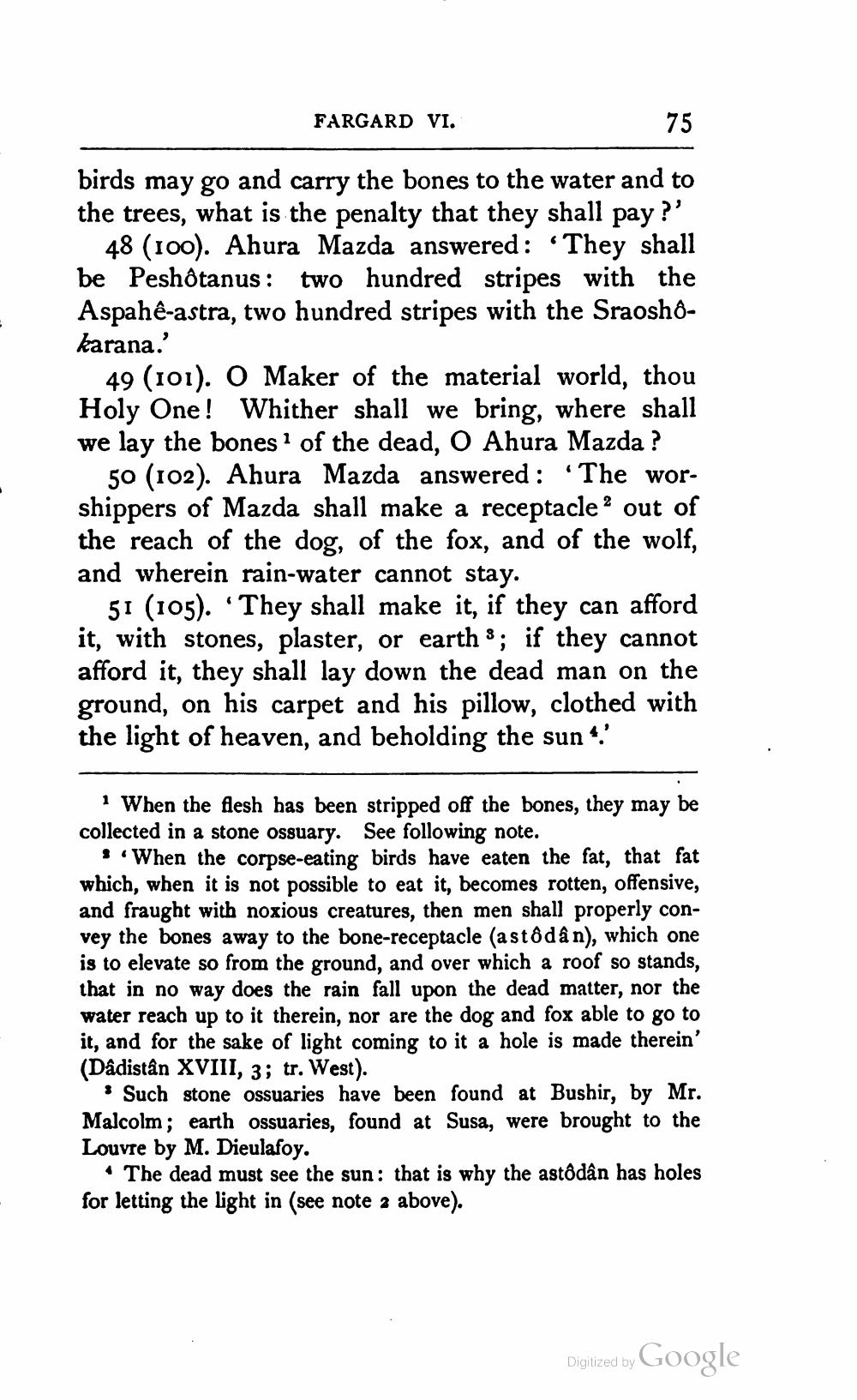________________
FARGARD VI.
75
birds may go and carry the bones to the water and to the trees, what is the penalty that they shall pay?'
48 (100). Ahura Mazda answered: They shall be Peshôtanus: two hundred stripes with the Aspahê-astra, two hundred stripes with the Sraoshôkarana.'
49 (101). O Maker of the material world, thou Holy One! Whither shall we bring, where shall we lay the bones 1 of the dead, O Ahura Mazda ?
50 (102). Ahura Mazda answered: 'The worshippers of Mazda shall make a receptacle2 out of the reach of the dog, of the fox, and of the wolf, and wherein rain-water cannot stay.
51 (105). They shall make it, if they can afford it, with stones, plaster, or earth; if they cannot afford it, they shall lay down the dead man on the ground, on his carpet and his pillow, clothed with the light of heaven, and beholding the sun.'
"
1 When the flesh has been stripped off the bones, they may be collected in a stone ossuary. See following note.
'When the corpse-eating birds have eaten the fat, that fat which, when it is not possible to eat it, becomes rotten, offensive, and fraught with noxious creatures, then men shall properly convey the bones away to the bone-receptacle (a stô dân), which one is to elevate so from the ground, and over which a roof so stands, that in no way does the rain fall upon the dead matter, nor the water reach up to it therein, nor are the dog and fox able to go to it, and for the sake of light coming to it a hole is made therein' (Dâdistân XVIII, 3; tr. West).
* Such stone ossuaries have been found at Bushir, by Mr. Malcolm; earth ossuaries, found at Susa, were brought to the Louvre by M. Dieulafoy.
The dead must see the sun : that is why the astôdân has holes for letting the light in (see note 2 above).
Digitized by
Google




